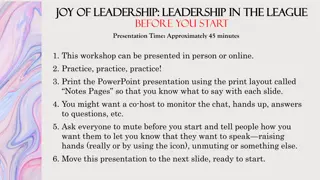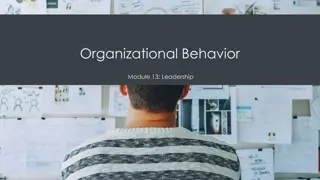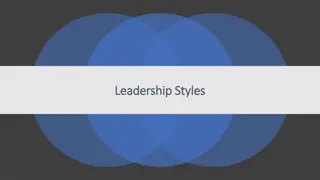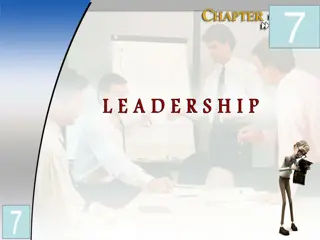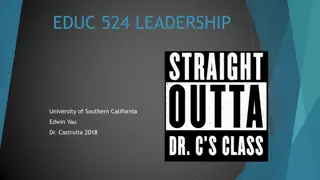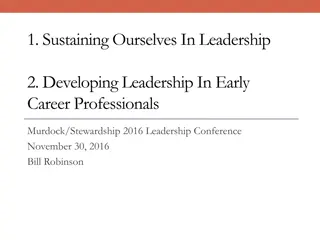Stepping Into the Leadership Role
Developing yourself as a leader involves understanding different perspectives, identifying your leadership style, leading by example, emphasizing communication, and valuing critical relationships.
Download Presentation

Please find below an Image/Link to download the presentation.
The content on the website is provided AS IS for your information and personal use only. It may not be sold, licensed, or shared on other websites without obtaining consent from the author. Download presentation by click this link. If you encounter any issues during the download, it is possible that the publisher has removed the file from their server.
E N D
Presentation Transcript
Leadership STEPPING INTO THE LEADERSHIP ROLE
Takeaways Leadership development is a process Communication is essential Relationships are critical What you do as chair matters See the big picture
Developing Yourself as a Leader What does leadership look like: From your perspective? From the student perspective From the staff perspective? From the faculty perspective? From the Dean s perspective? Personal status vs. Vested status
Your leadership style Work to identify your style. Your style will influence your interactions. Your style will influence your decision- making skills. Your style can help develop your technique. You can t copy someone else s style.
Lead by example Faculty and staff will watch you . ..and scrutinize everything you do! what time you arrive what time you leave who you talk to how you dress how you respond to email and everything else you haven t yet thought of
Communication is key Listen to concerns, ideas and feedback Be as transparent & direct as possible Make timely (not rushed or impulsive) responses Think before you write (remember texts & emails are public records) Admit mistakes Keep notes of your actions
Relationships are critical If you are new (or not) Get to know everyone (faculty and staff) Take time Listen Get off your turf If you have been there (or not) You are the boss Old friendships may not work the same You can t do this job wanting to always be liked Establish support outside of department
Celebrate Success! vThe college vThe department vThe faculty vThe students It s worth it!
See the BIG picture Understand needs of College/University Don t rely just on favorites Get used to wearing multiple hats Knowledge gives you the ability to make decisions with confidence Move from reactive to proactive
Prioritize Needs - Decide Course Take Action What is the department doing now? Why are we doing it? Can we do it better? How? What does the dean expect?
Leadership is not the same as management or administration Model the way Inspire a shared vision Challenge the process Enable others to act Encourage the heart *Taken from The Leadership Challenge: How to Make Extraordinary Things Happen in Organizations by J.M. Kouzes & B.Z. Posner, 6th ed. (Hoboken, NJ: John Wiley & Sons, 2017).

 undefined
undefined





 undefined
undefined



